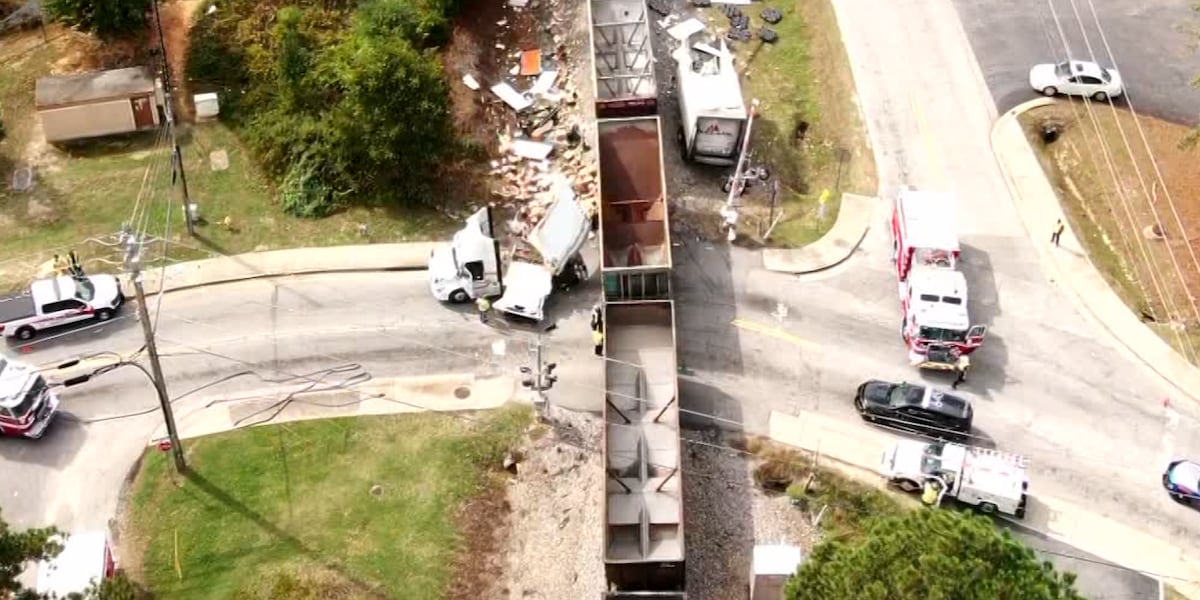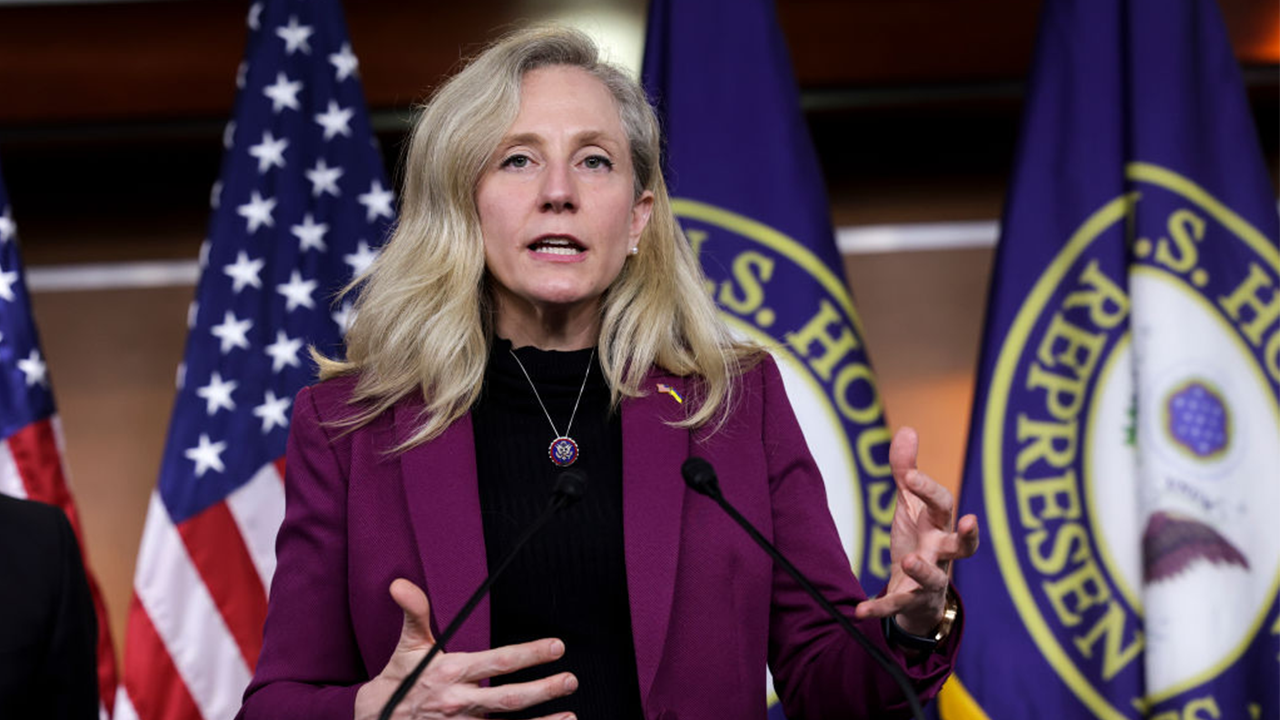Science
Man, machine and mutton: Inside the plan to prevent the next SoCal fire disaster

Nine months after one of the worst fires the region has seen in recorded history, a helicopter carrying two of the most consequential politicians in the fight against Southern California’s wildfires soared over the Santa Monica Mountains. Rows of jagged peaks slowly revealed steep canyons. The land was blotchy: some parts were covered in thick, green and shrubby native chaparral plants; others were blackened, comprised mostly by fire-stricken earth where chaparral used to thrive; and still others were blanketed by bone-dry golden grasses where the land had years ago been choked out by fire.
Amid this tapestry was a scattering of homes and businesses with only a handful of roads snaking out: Topanga. The dangers, should a fire roar down the canyon, were painfully clear at a thousand feet.
“If there are any issues on the Boulevard…” County Supervisor Lindsey Horvath said into her headset, trailing off.
“The community is trapped,” said Wade Crowfoot, California Secretary for Natural Resources, finishing the thought.
Over the same mountains where the Palisades fire roared, the supervisor and secretary were observing the state’s nearly 675-acre flagship project to stop the Santa Monica Mountains’ next firestorm from devouring homes and killing residents.
Crews from the Los Angeles County Fire Department and the Mountains Recreation and Conservation Authority, a local land management agency, were cutting a miles-long web of fuel breaks in the Northern Santa Monicas between Topanga and Calabasas. In the spring, they hope to perform a prescribed burn along the break. Just northwest, on the other side of Calabasas, Ventura County Fire Department deployed 500 goats and 100 sheep to eat acres of invasive grasses that are prone to conflagration.
A fire crew walks in the Santa Monica Mountains during a wildfire risk reduction project on Oct. 8.
(Myung J. Chun / Los Angeles Times)
It’s just a fraction of the work state leaders and local fire crews hope to someday accomplish, yet the scale and speed of the effort has already made some ecology and fire experts uneasy.
(The goats, however, have enjoyed virtually universal praise.)
While many firefighters and fire officials support the creation of fuel breaks, which offer better access to remote areas during a fire fight, fire ecologists warn that if not done carefully, fuel breaks can make the landscape even more fire-prone by inadvertently replacing chaparral with flammable invasive grasses.
Yet, after the Palisades fire last January, many state leaders and residents in the Santa Monicas feel it’s better to act now — even if the plan is a bit experimental — given the mountains will almost certainly burn again, and likely soon.

Goats help clear vegetation in the Upper Las Virgenes Canyon Open Space Preserve as part of a wildfire risk reduction project.
(Myung J. Chun / Los Angeles Times)
In March, Gov. Gavin Newsom signed an executive order streamlining the approval process for these projects. Instead of seeking multiple permits through separate lengthy processes — via the California Environmental Quality Act, Coastal Act, Endangered Species Act, and Native Plant Protection Act (among others) — applicants can now submit projects directly to the California Natural Resources Agency and California Environmental Protection Agency, which ensures compliance with all of the relevant laws.
Consequently, the state has approved well over 100 projects in mere months. Before, it was not uncommon for projects to sit in limbo for years awaiting various approvals.
In April, the state legislature and Newsom approved the early release of funds from a $10 billion climate bond that California voters approved last November for these types of projects. The Santa Monica Mountains Conservancy, which received over $31 million of that funding, awarded just over $3 million to L.A. County and Ventura County fire departments and the MRCA to complete the project.
On Oct. 8, Horvath and Crowfoot watched from a ridgeline northwest of Topanga as crews below maneuvered a remote-controlled machine — named the Green Climber after its color and ability to navigate steep slopes — to chew up shrubs on the hillsides. Others used a claw affixed to the arm of a bright-red excavator to rip out plants.

Los Angeles County Supervisor Lindsey Horvath flies over the Malibu coastline during a tour of a wildfire risk reduction project in the Santa Monica Mountains.
(Myung J. Chun/Los Angeles Times)
The goal was to create a new fuel break on a plot of land that is one of the few areas in the Santa Monicas that hasn’t burned in the last seven years, said Drew Smith, assistant fire chief with the L.A. County Fire Department. “Going into the fall, our biggest vulnerabilities are all this right here.”
Left alone, chaparral typically burns every 30 to 130 years, historically due to lightning strikes. But as Westerners began to settle the region, fires became more frequent. For example, Malibu Canyon — which last burned in the Franklin fire, just a month before the Palisades fire — now experiences fire roughly every eight years.
As the fire frequency chokes out the native chaparral ecosystem, fast growing, extremely flammable invasive grasses take over, making it even more likely that a loose cigarette or downed power line will ignite a devastating blaze. Scientists call this death spiral the human-grass-fire cycle. Stopping it is no simple task. And reversing it, some experts fear, may be borderline impossible.
The state’s current approach, laid out by a panel of independent scientists working with California’s wildfire task force, is three-pronged.
First: home hardening, defensible space and evacuation planning to ensure that if a monster fire starts, it causes the smallest amount of death and destruction.
Second: Techniques to prevent fire ignitions in the first place, such as deploying arson watch teams on high-wind days.
Third: Creating a network of fuel breaks.
Fuel breaks are the most hotly debated, in part because fuel breaks alone do little to stop a wind-driven fire throwing embers miles away.
But fire officials who have relied on fuel breaks during disasters argue that such fuel breaks can still play “a significant tactical role,” said Smith, allowing crews to reach the fire — or a new spot fire ignited by an ember — before it blows through a community.

A Los Angeles County Fire Department excavator with a claw grapple clears vegetation in the Santa Monica Mountains.
(Myung J. Chun/Los Angeles Times)
But Dan Cooper, principal conservation biologist with the Resource Conservation District of the Santa Monica Mountains, said there’s little scientific evidence yet that indicates fuel breaks are effective.
And because creating fuel breaks harms ecosystems and, at worst, can make them even more fire prone, fire ecologists warn they need to be deployed strategically. As such, the speed at which the state is approving projects, they say, is concerning.
Alexandra Syphard, senior research scientist at the Conservation Biology Institute and a leading Southern California fire ecologist, noted that the fuel break the Santa Monica Mountains team is creating near Topanga seems to cut right through healthy chaparral. If the fire crews do not routinely maintain the fuel break, it will be flammable golden grasses that grow back, not more ignition-resistant chaparral.

A remote controlled masticator — called the “Green Climber” — mulches flammable vegetation in Topanga to keep flames at a low height.
(Myung J. Chun / Los Angeles Times)
And the choices land managers make today can have significant consequences down the line: While fire crews and local conservationists are experimenting with how to restore chaparral to grass-filled areas, in the studies Syphard has looked at, once chaparral is gone, it seldom comes back.
For Cooper, the trade-offs of wildfire risk reduction get at a fundamental tension of living in the Santa Monicas. People move to places like Topanga, in part, because they love the chaparral-dotted vistas, the backyard oak woodlands and the privacy of life in the canyon. Yet, it’s that same environment that imperils them.
“What are you going to do about it? Pave the Santa Monicas? A lot of the old fire guys want to make everything grass in the Santa Monicas because grass fires are just easier to put out,” he said. “We need to learn how to live with fire — in a lot more sober way.”

Science
The key health bills California Gov. Newsom signed this week focused on how technology is impacting kids

New laws signed by Gov. Gavin Newsom aim to make the artificial intelligence and social media landscape in California safer, especially for minors.
Senate Bill 243, sponsored by state Sen. Steve Padilla (D-Chula Vista) will require AI companies to incorporate guardrails that prevent so-called “companion” chatbots from talking to users of any age about suicide or self-harm. It also requires that all AI systems alert minors using the chatbots that they are not human every three hours. The systems also are barred from promoting any sexually explicit conduct to users who are minors.
The law, to be enacted on Jan. 1, follows several lawsuits filed against developers in which families allege their children committed suicide after being influenced by an AI chatbot companion.
In the same vein, Newsom signed Assembly Bill 316, which removes a civil legal defense that some AI developers have been using to make the case that they are not responsible for any harm caused by their products. They have argued that their AI products act autonomously — and so there is no legal case to blame the developers.
In a bill analysis meant for legislators, Assemblymember Maggy Krell (D-Sacramento) wrote that this change will force developers to vet their product better and ensure that they can be held to account if their product does cause harm to its users.
Another bill, AB 621, increases civil penalties for AI developers who knowingly create nonconsensual “deepfake” AI pornography. The maximum penalties go from $30,000 to $50,000, and from $150,000 to $250,000 in cases where the courts determine that the actions were done with malice.
The author of the bill, Assemblymember Rebecca Bauer-Kahan (D-Orinda), has pointed out how this technology has been used to harm minors. “In one recent instance,” she noted in an analysis supporting the proposed legislation, “five students were expelled from a Beverly Hills Middle School after creating and sharing AI generated nude photos of their classmates.”
Another AI bill, Sen. Scott Wiener’s (D-San Francisco) SB 53, was signed into law by Newsom in late September. It will require large AI companies to publicly disclose certain safety and security protocols and report to the state on critical safety incidents. It also creates a public AI computing cluster — CalCompute — that will provide resources to startups and researchers developing large AI systems.
Bauer-Kahan also was the author of AB 56, which will require social media companies to place a warning label on their platforms for minors starting in 2027. The warning label must tell children and teens that social media is associated with mental health issues and may not be safe.
“People across the nation — including myself — have become increasingly concerned with Big Tech’s failure to protect children who interact with its products. Today, California makes clear that we will not sit and wait for companies to decide to prioritize children’s well-being over their profits,” Atty. Gen. Rob Bonta, who sponsored the bill, said in a news release. “By adding warning labels to social media platforms, AB 56 gives California a new tool to protect our children.”
Other bills recently approved by Newsom look to challenge the Internet’s grip on young people and their mental health.
AB 1043, for example, will require app stores and device manufacturers to take age data from users in order to ensure that they are complying with age verification requirements. Many tech companies, including Google and Meta, approved of the bill, which was written by Assemblymember Buffy Wicks (D-Oakland).
AB 772 will require grade K-12 schools in the state to develop a policy by mid-2027 on handling bullying and cyberbullying that happens off campus. “After-school bullying follows the pupil back to school and into the classroom, creating a hostile environment at school,” author and Assembly Speaker Pro Tem Josh Lowenthal (D-Long Beach) wrote in a bill analysis.
Proponents at the Los Angeles County Office of Education wrote in an earlier analysis that because students these days are constantly connected to the internet, bullying does not stop when school lets out. In addition, social media and texting can broadcast instances of bullying to larger audiences than ever before, according to the analysis.
The California School Boards Assn. opposed AB 772, saying that it wasn’t appropriate for school officials to take responsibility for student actions outside of school. Newsom signed the bill last weekend and included it in a larger package of bills meant to protect children from the effects of social media.
“Emerging technology like chatbots and social media can inspire, educate, and connect — but without real guardrails, technology can also exploit, mislead and endanger our kids. We’ve seen some truly horrific and tragic examples of young people harmed by unregulated tech, and we won’t stand by while companies continue without necessary limits and accountability,” Newsom said in a news release Monday. “We can continue to lead in AI and technology, but we must do it responsibly — protecting our children every step of the way. Our children’s safety is not for sale.”
Science
Elevated levels of a dangerous chemical detected near two L.A. County factories

Southern California air regulators issued violations to two foundries in southeast Los Angeles County after air sampling revealed elevated levels of a highly toxic metal near the facilities.
Air samples collected Sept. 10-22 in the city of Paramount had “slightly elevated” levels of hexavalent chromium, according to the South Coast Air Quality Management District. Federal and state regulators have found in the past that the chemical compound is a potent carcinogen with no safe level of exposure.
The samples that led to the violations were collected at a city-run monitoring station near Minnesota Avenue and Madison Street, prompting the air district to launch an investigation and conduct inspections at several industrial facilities nearby.
On Friday, the air district announced that it handed down multiple air-quality violations to Pro Cast Industries, located across the street from the monitoring station, and Fenico, about 1,300 feet east.
Hexavalent chromium, commonly known as chrome, is best known for providing shiny, rust-resistant coating to auto parts, aviation components and tools. Foundries, which liquefy and cast metals, can release hexavalent chromium during melting, welding and grinding.
The heavy metal is 500 times more carcinogenic than diesel exhaust and poses the second-highest cancer risk of all toxic air contaminants tracked by the state, according to the California Air Resources Board. Only dioxins, which come primarily from burning waste materials, are deadlier than airborne hexavalent chromium.
When it comes to the latter, exposure to 1 nanogram per cubic meter for 30 years is associated with a cancer risk of 360 cases in 1 million people, according to a state report. Three air samples collected last month at the Paramount monitor found levels between 1.6 to nearly 2.2 nanograms per cubic meter.
Investigators allege both foundries in Paramount failed to conduct tests to ensure compliance with hexavalent chromium emission limits, did not properly clean areas near chrome-alloy-melting facilities and operated equipment without necessary permits.
Pro Cast was also cited for using more chromium-containing metals than regulators had approved for its processes, and for improperly storing scrap metal that contained chromium.
Pro Cast and Fenico representatives did not respond to The Times’ request for comment.
The air district said that it may seek a settlement with the two foundries, but if one is not reached, it may assess financial penalties.
“We’re working diligently to ensure the air in our city remains safe for all our residents. The South Coast AQMD has the expertise and enforcement tools to investigate and address these readings,” Mayor Peggy Lemons said in a statement last week. “The city is deeply committed to keeping our community informed and working collaboratively with the air district to ensure our residents’ health and safety.”
Paramount is home to dozens of metal-related businesses, which have historically contributed to some of the state’s highest concentrations of hexavalent chromium, including a spike of 26 nanograms per cubic meter in late October 2016.
The air district initially launched a community air monitoring network for hexavalent chromium and other toxic air contaminants in Paramount in 2013, after residents complained about metallic odors near a metal forging and grinding operation.
Air sampling in 2016 revealed that some parts of Paramount were exposed to levels more than 50 times higher than in other areas of Los Angeles County, according the county Department of Public Health. Investigations and inspections of these facilities have reduced levels of toxic metals since then.
Nevertheless, air sampling has continued to find troubling levels of toxic metals after equipment malfunctions, repairs and noncompliance with regulation.
Science
California needs biomass energy to meet its wildfire goals. Its projects keep going South

Arbor Energy is, essentially, a poster child of the kind of biomass energy project California keeps saying it wants.
The state’s goal is to reduce wildfire risk on 1 million acres of wildlands every year, including by thinning overgrown forests, which is expected to generate roughly 10 million tons of wood waste annually. Arbor hopes to take that waste, blast it through a “vegetarian rocket engine” to produce energy, then sequester all of the carbon the process would generate underground.
California has billed Arbor — and the handful of other similarly aimed projects it’s financed — as a win-win-win: wildfire mitigation, clean energy and carbon sequestration all in one.
Yet, after Arbor initially won state financial backing for a pilot project in Placer County, the El Segundo-based company’s California ambitions fell through, like many biomass projects before it.
Instead, it’s heading to Louisiana.
California, biomass energy advocates say, has struggled to get past its distrust of the technology, given traditional biomass’ checkered past of clear-cutting forests and polluting poorer communities. Further, the state’s strict permitting requirements have given residents tremendous power to veto projects and created regulatory headaches.
But many environmental groups argue it’s an example of California’s environmental and health protections actually working. If not done carefully, bioenergy projects run the risk of emitting carbon — not sequestering it — and polluting communities already grappling with some of the state’s dirtiest air.
“When you look at biomass facilities across California — and we’ve done Public Records Act requests to look at emissions, violations and exceedances … the reality is that we’re not in some kind of idealized pen-and-paper drawing of what the equipment does,” said Shaye Wolf, climate science director at the Center for Biological Diversity. “In the real world, there are just too many problems with failures and faults in the equipment.”
There are simpler and safer uses for this wood waste, these critics say: fertilizer for agriculture, wood chips and mulch. It may not provide carbon-negative energy but comes with none of the risks of bioenergy projects, they say.
For the record:
11:51 a.m. Sept. 30, 2025A previous version of this story stated that the Center for Biological Diversity advocated for a wildfire approach involving only home hardening and evacuation planning. Its proposal also includes prescribed burning and defensible-space vegetation management.
The Center for Biological Diversity and others advocate for a more “hands-off” approach to California’s forests and urge management of the wildfire crisis primarily through home hardening, evacuation planning, prescribed burning and defensible-space vegetation management. But fire and ecology experts say more than a century of fire suppression has made that unrealistic.
However, the sweeping forest-thinning projects these experts say are needed will cost billions, and so the state needs every source of funding it can get. “Our bottleneck right now is, how do we pay for treating a million acres a year?” said Deputy Chief John McCarthy of the California Department of Forestry and Fire Protection, who oversees the agency’s wood products and bioenergy program.
In theory, the class of next-generation biomass energy proposals popping up across California could help fund this work.
“California has an incredible opportunity,” said Arbor chief executive and co-founder Brad Hartwig. With the state’s leftover biomass from forest thinning, “we could make it basically the leader in carbon removal in the world.”
A lot of wood with nowhere to go
Biomass energy first took off in California in the 1980s after small pioneering plants at sawmills and food-processing facilities proved successful and the state’s utilities began offering favorable contracts for energy sources they deemed “renewable” — a category that included biomass.
In the late ‘80s and early ‘90s, the state had more than 60 operating biomass plants, providing up to 9% of the state’s residential power. Researchers estimate the industry supported about 60,000 acres of forest treatment to reduce wildfire risk per year at the time. But biomass energy’s heyday was short-lived.
In 1994, the California Public Utilities Commission shifted the state’s emphasis away from creating a renewable and diverse energy mix and toward simply buying the cheapest possible power.
Biomass — an inherently more expensive endeavor — struggled. Many plants took buyouts to shut down early. Despite California’s repeated attempts to revitalize the industry, the number of biomass plants continued to dwindle.
Today, only 23 biomass plants remain in operation, according to the industry advocate group California Biomass Energy Alliance. The state Energy Commission expects the number to continue declining because of aging infrastructure and a poor bioenergy market. California’s forest and wildfire leadership are trying to change that.
In 2021, Gov. Gavin Newsom created a task force to address California’s growing wildfire crisis. After convening the state’s top wildfire and forest scientists, the task force quickly came to a daunting conclusion: The more than a century of fire suppression in California’s forests — especially in the Sierra Nevada — had dramatically increased their density, providing fires with ample fuel to explode into raging beasts.
To solve it, the state needed to rapidly remove that extra biomass on hundreds of thousands, if not millions, of acres of wildlands every year through a combination of prescribed burns, rehabilitation of burned areas and mechanically thinning the forest.
McCarthy estimated treating a single acre of land could cost $2,000 to $3,000. At a million acres a year, that’s $2 billion to $3 billion annually.
“Where is that going to come from?” McCarthy said. “Grants — maybe $200 million … 10% of the whole thing. So, we need markets. We need some sort of way to pay for this stuff and in a nontraditional way.”
McCarthy believes bioenergy is one of those ways — essentially, by selling the least valuable, borderline unusable vegetation from the forest floor. You can’t build a house with pine cones, needles and twigs, but you can power a bioenergy plant.
However, while biomass energy has surged in Southern states such as Georgia, projects in California have struggled to get off the ground.
In 2022, a bid by Chevron, Microsoft and the oil-drilling technology company Schlumberger to revive a traditional biomass plant near Fresno and affix carbon capture to it fell through after the U.S. Environmental Protection Agency requested the project withdraw its permit application. Environmental groups including the Center for Biological Diversity and residents in nearby Mendota opposed the project.
This year, a sweeping effort supported by rural Northern California counties to process more than 1 million tons of biomass a year into wood pellets and ship them to European bioenergy plants (with no carbon capture involved) in effect died after facing pushback from watch groups that feared the project, led by Golden State Natural Resources, would harm forests, and environmental justice groups that worried processing facilities at the Port of Stockton would worsen the air quality in one of the state’s most polluted communities.
Arbor believed its fate would be different.
Bioenergy from the ground up
Before founding Arbor, Hartwig served in the California Air National Guard for six years and on a Marin County search and rescue team. He now recalls a common refrain on the job: “There is no rescue in fire. It’s all search,” Hartwig said. “It’s looking for bodies — not even bodies, it’s teeth and bones.”
In 2022, he started Arbor, with the idea of taking a different approach to bioenergy than the biomass plants shuttering across California.
To understand Arbor’s innovation, start with coal plants, which burn fossil fuels to heat up water and produce steam that turns a turbine to generate electricity. Traditional biomass plants work essentially the same but replace coal with vegetation as the fuel. Typically, the smoke from the vegetation burning is simply released into the air.

Small detail of the 16,000-pound proof-of-concept system being tested by Arbor that will burn biomass, capture carbon dioxide and generate electricity.
(Myung J. Chun/Los Angeles Times)
Arbor’s solution is more like a tree-powered rocket engine.
The company can utilize virtually any form of biomass, from wood to sticks to pine needles and brush. Arbor heats it to extreme temperatures and deprives it of enough oxygen to make the biomass fully combust. The organic waste separates into a flammable gas — made of carbon monoxide, carbon dioxide, methane and hydrogen — and a small amount of solid waste.
The machine then combusts the gas at extreme temperatures and pressures, which then accelerates a turbine at much higher rates than typical biomass plants. The resulting carbon dioxide exhaust is then sequestered underground.
Arbor portrays its solution as a flexible, carbon-negative and clean device: It can operate anywhere with a hookup for carbon sequestration. Multiple units can work together for extra power. All of the carbon in the trees and twigs the machine ingests ends up in the ground — not back in the air.
But biomass watchdogs warn previous attempts at technology like Arbor’s have fallen short.
This biomass process creates a dry, flaky ash mainly composed of minerals — essentially everything in the original biomass that wasn’t “bio” — that can include heavy metals that the dead plants sucked up from the air or soil. If agricultural or construction waste is used, it can include nasty chemicals from wood treatments and pesticides.
Arbor plans — at least initially — on using woody biomass directly from the forest, which typically contains less of these dangerous ash chemicals.
Turning wood waste into gas also generates a thick, black tar composed of volatile organic compounds — which are also common contaminants following wildfires. The company says its gasification process uses high enough temperatures to break down the troublesome tar, but researchers say tar is an inevitable byproduct of this process.

Grant Niccum, left, Arbor lead systems engineer and Kevin Saboda, systems engineer, at the company‘s test site in San Bernardino. Biomass is fed into this component and then compressed to 100 times atmospheric pressure and burned to create a synthetic gas.
(Myung J. Chun / Los Angeles Times)
Watchdogs also caution that the math to determine whether bioenergy projects sequester or release carbon is complicated and finicky.
“Biomass is tricky, and there’s a million exceptions to every rule that need to be accounted for,” said Zeke Hausfather, climate research lead with Frontier Climate, which vets carbon capture projects such as Arbor’s and connects them with companies interested in buying carbon credits. “There are examples where we have found a project that actually works on the carbon accounting math, but we didn’t want to do it because it was touching Canadian boreal forest that’s old-growth forest.”
Frontier Climate, along with the company Isometric, audits Arbor’s technology and operations. However, critics note that because both companies ultimately support the sale of carbon credits, their assessments may be biased.
At worst, biomass projects can decimate forests and release their stored carbon into the atmosphere. Arbor hopes, instead, to be a best-case scenario: improving — or at least maintaining — forest health and stuffing carbon underground.
When it all goes South
Arbor had initially planned to build a proof of concept in Placer County. To do it, Arbor won $2 million through McCarthy’s Cal Fire program and $500,000 through a state Department of Conservation program in 2023.
But as California fell into a deficit in 2023, state funding dried up.
So Arbor turned to private investors. In September 2024, Arbor reached an agreement with Microsoft in which the technology company would buy carbon credits backed by Arbor’s sequestration. In July of this year, the company announced a $41-million deal (well over 15 times the funding it ever received from California) with Frontier Climate, whose carbon credit buyers include Google, the online payment company Stripe and Meta, which owns Instagram and Facebook.
To fulfill the credits, it would build its first commercial facility near Lake Charles, La., in part powering nearby data centers.
“We were very excited about Arbor,” McCarthy said. “They pretty much walked away from their grant and said they’re not going to do this in California. … We were disappointed in that.”
But for Arbor, relying on the state was no longer feasible.
“We can’t rely on California for the money to develop the technology and deploy the initial systems,” said Hartwig, standing in Arbor’s plant-covered El Segundo office. “For a lot of reasons, it makes sense to go test the machine, improve the technology in the market elsewhere before we actually get to do deployments in California, which is a much more difficult permitting and regulatory environment.”

Rigger Arturo Hernandez, left, and systems engineer Kevin Saboda secure Arbor’s proof-of-concept system in the company’s San Bernardino test site after its journey from Arbor’s headquarters in El Segundo. The steel frame was welded in Texas while the valves, tubing and other hardware were installed in El Segundo.
(Myung J. Chun/Los Angeles Times)
It’s not the first next-generation biomass company based in California to build elsewhere. San Francisco-based Charm Industrial, whose technology doesn’t involve energy generation, began its sequestration efforts in the Midwest and plans to expand into Louisiana.
The American South has less stringent logging and environmental regulations, which has led biomass energy projects to flock to the area: In 2024, about 2.3% of the South’s energy came from woody biomass — up from 2% in 2010, according to the U.S. Energy Information Administration. Meanwhile, that number on the West Coast was only 1.2%, continuing on its slow decline.
And, unlike in the West, companies aiming to create wood pellets to ship abroad have proliferated in the South. In 2024, the U.S. produced more than 10.7 million tons of biomass pellets; 82% of which was exported. That’s up from virtually zero in 2000. The vast majority of the biomass pellets produced last year — 84% — was from the South.
Watchdogs warn that this lack of guardrails has allowed the biomass industry to harm the South’s forests, pollute poor communities living near biomass facilities and fall short of its climate claims.
Over the last five years, Drax — a company that harvests and exports wood pellets and was working with Golden State Natural Resources — has had to pay Louisiana and Mississippi a combined $5 million for violating air pollution laws. Residents living next to biomass plants, like Drax’s, say the operations have worsened asthma and routinely leave a film of dust on their cars.
But operating a traditional biomass facility or shipping wood pellets to Europe wasn’t Arbor’s founding goal — albeit powering data centers in the American South wasn’t exactly either.
Hartwig, who grew up in the Golden State, hopes Arbor’s technology can someday return to California to help finance the solution for the wildfire crisis he spent so many years facing head-on.
“We’ve got an interest in Arkansas, in Texas, all the way up to Minnesota,” Hartwig said. “Eventually, we’d like to come back to California.”
-

 Augusta, GA4 days ago
Augusta, GA4 days ago‘Boom! Blew up right there’: Train slams into semi in Grovetown
-

 Wisconsin6 days ago
Wisconsin6 days agoAppleton Public Library wins 2025 Wisconsin Library of the Year award for distinguished service
-
Business5 days ago
Los Angeles Times Media Group takes step to go public
-

 Vermont6 days ago
Vermont6 days agoFeds: Springfield dealer ran his drug business from Vermont jail
-
Virginia6 days ago
Match 13 Preview: #8 Virginia
-

 West Virginia6 days ago
West Virginia6 days agoWest Virginia eatery among Yelp’s “outrageous outdoor dining spots”
-

 News5 days ago
News5 days agoWhat we know about the charges against New York’s Attorney General Letitia James
-

 Politics5 days ago
Politics5 days agoSpanberger refuses to urge Jay Jones to exit race, dodges questions after ‘two bullets’ texts
























